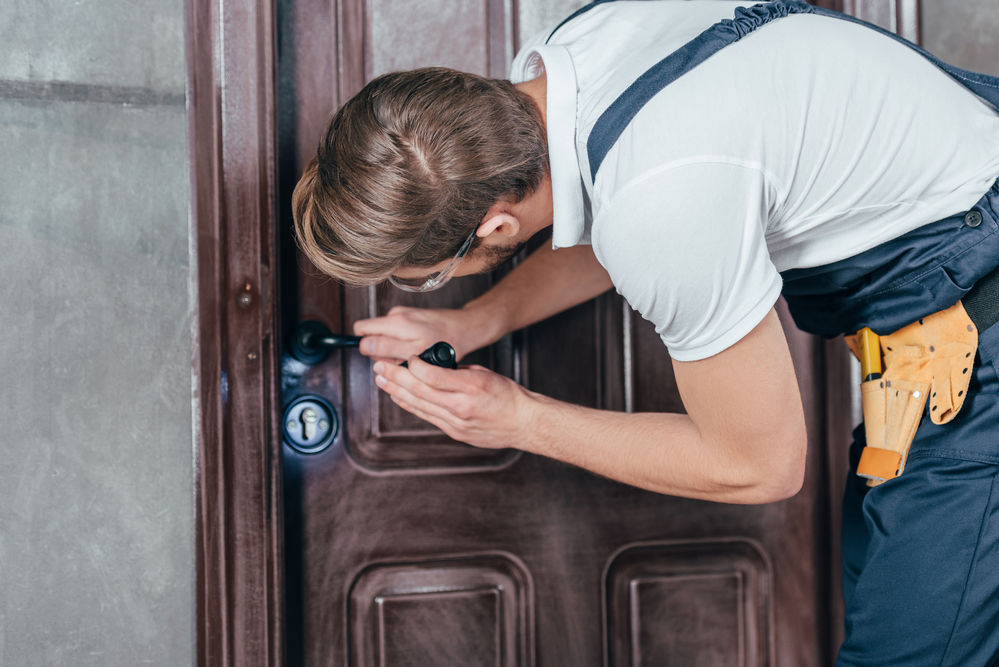
No door lasts forever. Even the finest doors with the best hardware will eventually show signs of aging, including functional issues. When a door has trouble opening and closing or is prone to sticking in the frame, it can be annoying, but it should also be expected. Furthermore, it shouldn’t be too concerning, because there’s almost always a fix, as long as you know how to diagnose the cause of the problem.
At ETO we’re committed to not only providing excellent exterior and interior doors, but also educating our customers on how best to take care of their doors and remedy problems that naturally pop up.
Identifying the Cause
Before running off to the hardware store, you need to find exactly what’s causing your door to not close or get stuck. That means checking some of the typical trouble spots on an interior door:
-
Latches
Usually, when your door latch isn’t working properly, it will result in an audible grinding or scraping. Check your latch to see if there’s any evidence of grinding or scraping, and when you close your door, feel for resistance around the latch mechanism. Your strike plate and latch may not be aligned properly, or maybe your door isn’t latching due to some other reason.
-
Hinges
Does your dysfunctional door sometimes look like it’s sagging? Loose hinges will cause doors to have trouble opening and closing, and if your door seems like it’s hanging by a thread, it probably is. Check your hinges to see if any screws are loose, or if there is some major damage to the hinge itself.
-
Jambs
A jamb is the meeting place between the door slab and door frame. A door slab and frame should enjoy a close fit, but should ideally not come into contact with each other. Check out the surfaces where your frame and slab meet; do you notice any scratches? When you close your door and open it again, does it seem to get stuck around the corners? You probably have a jam in your jamb.
Repairing and Realigning Strike Plates
You can replace a bent or warped strike plate easily enough, but why do that when you can just repair it? Metal is reasonably pliable, so sometimes all it takes to fix a latch issue is the right amount of force. You can remove a curved strike plate and simply pound it flat with a hammer and reattach.
In the case of a misaligned strike plate, you’ll have to do a little more work. Removing and reattaching the plate in the correct position is simple enough – just take it off, whip out the drill, and install it in the right spot – but make sure you fill the previous (incorrect) mounting holes with wood filler before doing that, or else you’ll risk repeating the mistakes of the past.
Widening a Strike Plate Hole
If your strike plate is perfectly aligned but still doesn’t seem to capture the latch, you might want to try widening the hole in the plate. However, you don’t want to widen it too much. Use a metal file to make incremental advances on the edge of the plate hole until the latch fits perfectly.
Tightening Hinge Screws
It’s not much of an instruction to say “tighten your screws,” especially when, often enough, screws don’t just come loose on their own. Years and years of constant use put pressure on those screws, pulling them back and forth with the entire weight of your door slab, which is probably made of wood. This eventually strips the screw holes, making it impossible for the screws to hold tight.
If you determine this is your problem, fear not. You can compensate for the stripped wood with just a little carpenter’s glue and some slim, small piece of wood, like a toothpick or matchstick. Coat your stick of choice in carpenter’s glue and insert it into the hole, making sure it sticks to one side. Allow the glue to dry, and then return the screw to its rightful home, now much more secure! Repeat this process for all stripped holes.
Sanding Down the Jambs
Usually, jambs get stuck because a door is fundamentally misaligned. This can happen for a number of reasons, ranging from hinge placement to wood warping to slight imperfections in the cut and dimensions of the slab, frame, or both. Instead of finding the exact root of this problem, which could become a costly project and even involve the total replacement of the door and frame, you should just do a little sanding.
Figure out which sides are causing sticking problems, and use sandpaper or an electric sander to make small adjustments until the door slab is able to close flush with the frame without issue.


